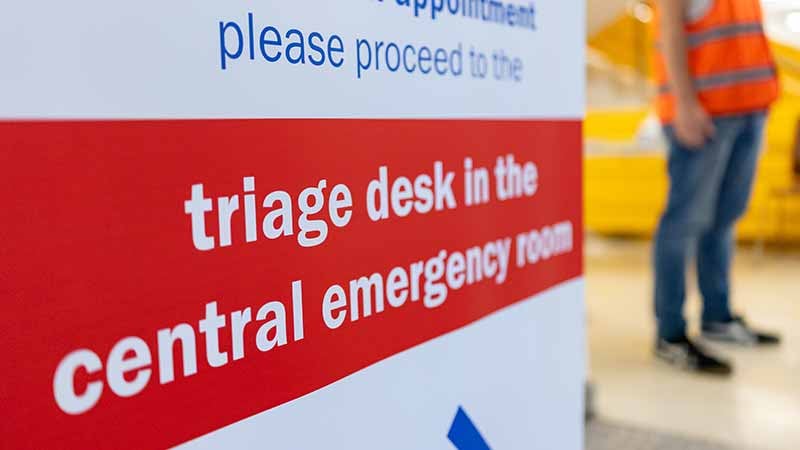Children with the least material deprivation visit the emergency department (ED) for concussion more frequently than children with the most material deprivation, according to a Canadian study. The results suggest inequality in access to care, the study authors wrote.
“Underserved youth are about 1.5 to 1.8 times less likely to seek care than those in the highest socioeconomic bracket,” study author Alison Macpherson, PhD, professor of kinesiology and health science at York University in Toronto, told Medscape Medical News.
The study was published online on July 11 in Injury Prevention.
A Wide Gap
ED visits for concussion have increased substantially over the past decade among patients younger than 20 years in Toronto. In the current study, researchers analyzed data for all Ontario ED visits for children and adolescents (ages 0-19 years) diagnosed with concussion between 2010 and 2020. The study population included 140,031 patients. Data were obtained from ICES (formerly known as the Institute for Clinical Evaluative Sciences), a health services research organization funded by the Ontario Ministry of Health.
Socioeconomic status was assessed using factors of household material deprivation, which included low income, unemployment, single-parent families, parents without a high school diploma, and living in residences in need of major repair. Data were compared by age and sex.
All age groups saw a rise in rates of concussion-related visits from 2010 to 2019, but the 10- to 14-year-olds and 15- to 19-year-olds saw the largest increases. For the former group, concussion-related visits per 100,000 increased from 350 in 2010 to 737 in 2019. For the latter group, visits increased from 382 in 2010 to 872 in 2019. Sex-related differences in concussion have been decreasing, and by 2019-2020, there were no significant differences between males and females, the researchers found.
The gap in visits due to material deprivation was wide. The rates of concussion-related ED visits per 100,000 children were 36.7 in 2010 and 43.3 in 2020 among children with the greatest material deprivation. The corresponding rates in children with the lowest material deprivation were 62.6 and 61.8.
Part of the reason for the difference could be inequitable participation in organized sports, Macpherson said, “but the socioeconomic association persisted in 2020” amid the COVID-19 pandemic, a time when most organized sports were canceled. The study “suggests that something else is going on,” she added.
Concussions are “an invisible injury,” and while the decision to seek care is clear-cut with a broken bone, for example, the decision is less automatic for a concussion, Macpherson said. Some of the barriers to seeking care may include a lack of awareness about concussions and parents’ decreased ability to take time off to present their child for care.
Rowan’s Law in Ontario, which mandates concussion education in all high schools, and Parachute Canada, Canada’s injury prevention organization, provide many of the education tools, Macpherson said. However, some parents might be unable to read the materials in English and might need them in another language. Special education may be needed in low-income areas with parent meetings, for example. Also, awareness could better expand to playgrounds and other areas outside of organized team sports settings, Macpherson said.
A limitation of the study is that it was not able to determine whether care for concussion was sought in healthcare facilities outside EDs, the study authors acknowledged.
Education Through Sports
Commenting on the study for Medscape Medical News, Shannon Scratch, PhD, C.Psych, a clinician scientist and director of the Neurorehab Outcomes via Education and Learning Laboratory at Holland Bloorview Kids Rehabilitation Hospital in Toronto, said that she was heartened to see that sex differences in concussion care seeking in the ED are fading away. “This is a really promising trend,” she said.
“It is also clear that there is a concussion care access divide based on socioeconomic status. We now need to focus on closing this gap,” Scratch added. “Education initiatives in equitable settings may be one factor. But it is important to know that there are many reasons why some families do not feel comfortable or are unable to present to emergency services in Ontario.”
So far, many adults have received concussion education only through their child’s sports setting, Scratch said. Families from lower socioeconomic backgrounds do not have the same access to organized sports in the community and outside of school settings.
“There are also high barriers to entry in sports like hockey — for example, registration and equipment costs and ability to travel — where we have seen the greatest focus on concussion education and protocol development,” Scratch continued. “Therefore, a more balanced and equitable approach to concussion education is needed. Young people and their parents should be provided with concussion education, including how to recognize symptoms and access care, within schools and their local communities. Focusing education on adults who support young people, including teachers and coaches, should also continue,” she said.
The study was initially supported by a Canadian Institutes of Health Research Chair in Child and Youth Health Services and Policy Research. Macpherson and Scratch reported having no relevant financial relationships.
Marcia Frellick is an independent healthcare journalist and a regular contributor to Medscape Medical News.
Source link : https://www.medscape.com/viewarticle/care-seeking-concussion-varies-material-deprivation-2025a1000j3d?src=rss
Author :
Publish date : 2025-07-18 09:33:00
Copyright for syndicated content belongs to the linked Source.
